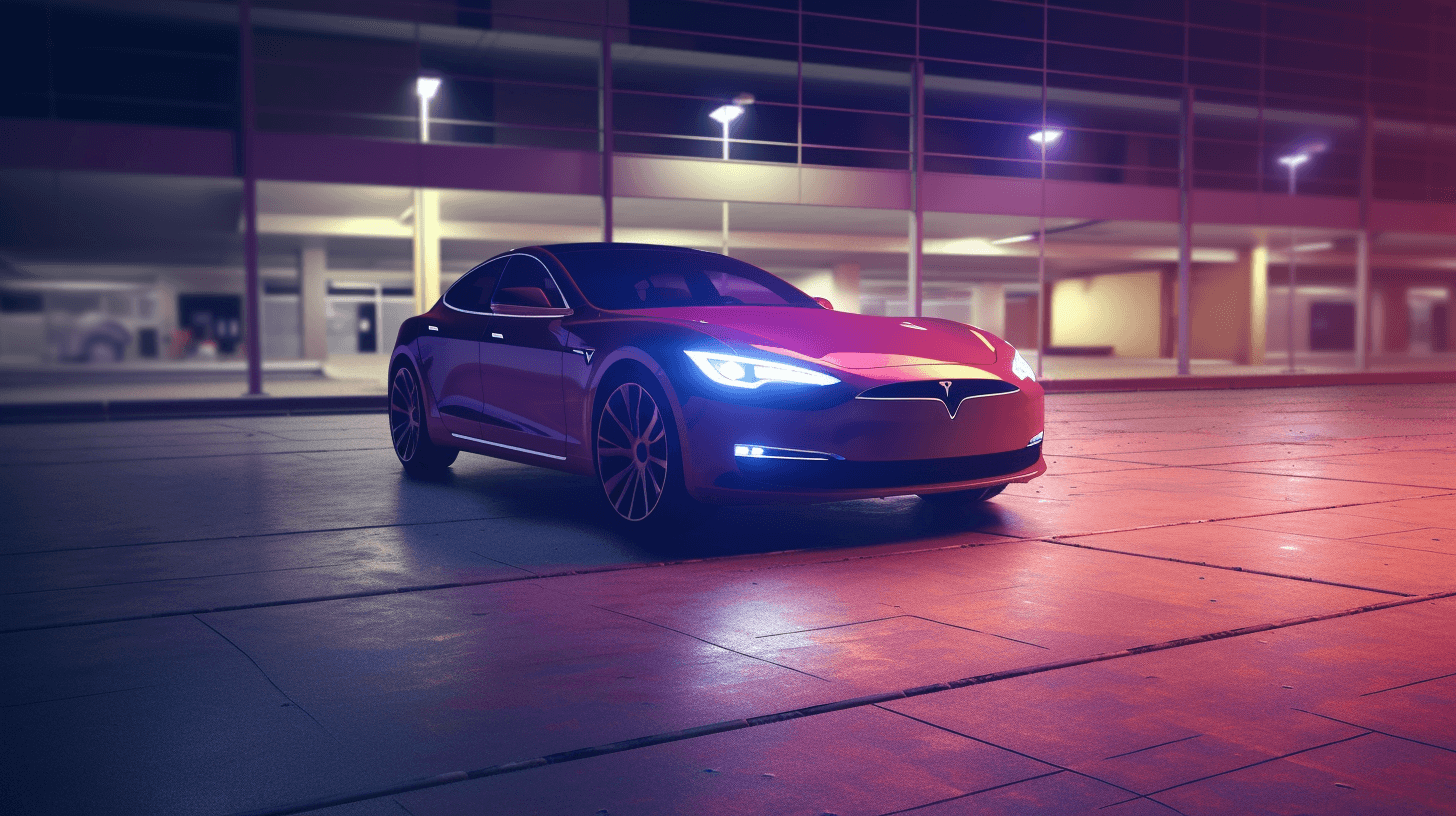🚗⚡🌎Electric Kakini Sales Go Sky High: EPA Get Stiff Limits Fo’ Help Um Out
Da Biden administration stay goin’ all out fo’ cut da kine auto pollution. Dey like make choke mo’ electric vehicles (EV) on top da road by 2032. Dat goin’ be big kine change, cuz right now no mo’ plenny EVs out dea. Da Environmental Protection Agency (EPA) stay workin’ on da kine new rules fo’ make da auto peeps stay in line wit da greenhouse gas limits from 2027 to 2032. Dis plan goin’ be one big push fo’ make da electric vehicles mo’ popular. 🚗⚡🔋
Da EPA like make choke new EVs on top da road by 2030 an’ 2032. Da goal stay 60% by 2030 an’ 67% by 2032 fo’ da kine small kahs an’ trucks. For da medium-duty trucks, dey like make 46% of dem be electric by 2032. EPA boss Michael Regan say dis goin’ be da most “ambitious pollution standards evah” an’ goin’ help da `aina, da people, an’ da poket book too. Da EPA goin’ decide on da kine options aftah da public talk story. 🚚🔌🌱
Da auto industry guys stay tinkin’ dis plan stay “aggressive.” Dey stay worried dat da plan mo’ big kine den wat dey wen talk about befo’. Da automakers stay askin’ how fast can dey make dis kine change, but dey need da right policies an’ market kine stuff fo’ make um work. Da European car maker Stellantis stay surprised dat da EPA wen go past da kine 50% goal fo’ 2030 dat da president wen talk about befo’. 🌎🚘🤔
Da EPA’s plan goin’ help da environment by reducing da greenhouse gas emissions by 56% compared to da 2026 limits. Dat goin’ be choke bettah air quality fo’ everybody, an’ save almost 10 billion tons of CO2 by 2055. Dis plan also goin’ save thousands of dollahs fo’ da people who buy EVs an’ help cut da need fo’ import oil. 🏭🛢️💨
Da EPA’s plan stay big kine, an’ da auto industry get long way fo’ go fo’ hit dose goals. Right now, only 7.2% of da new kah sales stay EVs. But, da percentage stay growin’. Da kine experts say goin’ be hard fo’ make dat kine sales numbers, but maybe can hit 49% by 2032. Da kine high prices fo’ da EVs stay one big problem fo’ da peeps. 📈🤑⚖️
One recent poll wen show dat plenny peeps in da US still no stay ready fo’ go all electric fo’ dea next kah. Da high prices an’ not enough charging stations stay da big problems. Only 19% stay ready fo’ buy one EV, 22% stay maybe, but 47% stay no way. 🚦🔋📊
Da White House climate kine guy, Ali Zaidi, say since Biden wen come in, da EV sales wen triple an’ da kine available models wen double. Da industry wen invest ova $100 billion in da EVs. Zaidi stay tinkin’ da automakers get da kine technology, infrastructure, an’ supply chain fo’ make um work. 🧠💪🏭
Da tailpipe rule stay important cuz transportation stay da biggest source of CO2 emissions in da US. In 2020, dey wen make up 27% of greenhouse gas emissions. Da second biggest stay electric powah wit 25%. Da environmental groups say we need da kine strict tailpipe pollution standards fo’ make da air mo’ bettah an’ slow down da kine bad weathah. 🌪️🔥🌊
Da EPA rules goin’ help da US get on track fo’ get rid of da pollution from da tailpipes, cut da need fo’ oil, create jobs, an’ save da peeps money on gas. Natural Resources Defense Council president Manish Bapna stay tinkin’ dis plan stay solid fo’ da environment. Margo Oge, da ex-head of EPA’s Office of Transportation and Air Quality, stay callin’ da tailpipe rules da most important ting da Biden administration stay doin’ fo’ fight climate change. 🌡️❄️🌲
Da Biden administration stay workin’ on otha tings fo’ help da EVs too. Dey get da kine tax credits fo’ make da EVs mo’ cheap fo’ da peeps an’ fo’ da companies dat make um. Right now, da kine new EVs made in North America can get $7,500 tax credit, an’ used EVs can get up to $4,000. But get limits on da price an’ income fo’ da peeps. Starting April 18, Treasury Department goin’ make new rules fo’ da tax credit, an’ mo’ small kine credits might not be enough fo’ pull in da new EV buyers. 💸💰🛍️
So, da EPA plan stay one big kine change fo’ da auto industry an’ da environment. Get choke work fo’ do fo’ reach da goals, but da plan stay tryin’ fo’ make da world mo’ bettah an’ help da peeps save money too. 🌈🌴🤙
NOW IN ENGLISH
🚗⚡🌎 Ambitious EPA Emission Limits Aim to Boost US Electric Vehicle Sales
The Biden administration has proposed stringent new automobile pollution limits, which would necessitate up to two-thirds of new vehicles sold in the U.S. to be electric by 2032. This represents a nearly tenfold increase over current electric vehicle sales. The Environmental Protection Agency (EPA) announced the proposed regulation on Wednesday, which sets the strictest ever tailpipe emissions limits for the 2027 through 2032 model years. The proposal calls for significantly more new EV sales than what the auto industry agreed to less than two years ago. 📈🔋🚘
If finalized as expected next year, the plan would be the strongest push yet toward a once almost unthinkable shift from gasoline-powered cars and trucks to battery-powered vehicles. The EPA projects that at least 60% of new passenger vehicles sold in the U.S. would be electric by 2030 and up to 67% by 2032. For medium-duty trucks, the EPA projects 46% of new vehicle sales will be EVs in 2032. EPA Administrator Michael Regan described the proposal as “the most ambitious pollution standards ever for cars and trucks.” He added that it would reduce dangerous air and climate pollution, lower fuel and maintenance costs for families, and improve air quality for communities across the nation. 🌬️🌳💰
The auto industry has expressed concerns about the proposed rules, calling them “aggressive by any measure.” The industry has questioned how fast the transition can be made and emphasized that the right policies and market conditions need to be in place. The EPA’s proposed standards for light-duty cars and trucks are expected to result in a 56% reduction in projected greenhouse gas emissions compared with existing standards for model year 2026. The proposals would help avoid nearly 10 billion tons of carbon dioxide emissions by 2055, which is more than twice the total U.S. CO2 emissions last year. 🏭🌡️♻️
However, with electric vehicles accounting for just 7.2% of U.S. vehicle sales in the first quarter of this year, the industry has a long way to go to even approach the Biden administration’s targets. Many auto industry analysts believe it will be difficult for automakers to meet the projected sales percentage, citing high prices for EVs compared with gas-powered cars. A recent poll shows that many Americans aren’t yet sold on going electric for their next cars, with high prices and too few charging stations being the main deterrents. 🚗🔌📊
White House climate adviser Ali Zaidi mentioned that EV sales have tripled since Biden took office and the number of available EV models has doubled. Analysts have repeatedly revised their forecasts upward since Biden, a Democrat, took office, and the industry announced over $100 billion in EV investments. Zaidi believes that automakers have the technology, infrastructure, and supply chain to achieve the proposed targets. 📈🌐🔧
The tailpipe rule is crucial because transportation is the largest source of carbon emissions in the U.S., accounting for about 27% of greenhouse gas emissions in 2020. The EPA believes that stricter tailpipe pollution standards are needed to clean the air and slow the impacts of severe weather events such as hurricanes, tornados, and wildfires. Environmental groups and experts have praised the new rules as a significant step towards combating climate change and reducing its worst outcomes. 🚛💨🌪️
In addition to stricter pollution rules, the Biden administration is also promoting EVs through tax credits for manufacturing and purchases. However, there are price and purchaser income limits that make some vehicles ineligible for these credits. Starting April 18, new requirements by the Treasury Department will result in fewer new electric vehicles qualifying for a full $7,500 federal tax credit. A smaller credit may not be enough to attract new buyers for EVs, which currently have an average cost of $58,600 according to Kelley Blue Book. The success of the proposed EPA regulations will depend on a combination of supportive policies, market conditions, and public willingness to transition to electric vehicles. 🚙⚡🔌
Regenerate response







